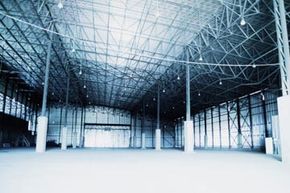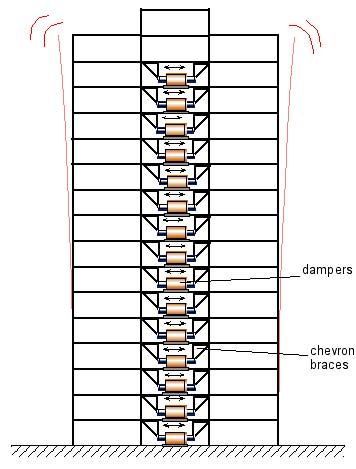Key Takeaways
- Steel is favored in construction for its strength, durability and versatility.
- It offers superior structural integrity, allowing for the creation of tall, resilient buildings and bridges.
- Despite its advantages, steel production can have environmental impacts, prompting efforts to develop sustainable alternatives.
Ever since the first skyscrapers went up in Chicago during the late 1800s, steel has been a major component in commercial building construction [source: Time Rime]. Before that, builders used cast iron. But they found that structural steel beams set in concrete allowed them to frame tall buildings that were more fire resistant and more structurally sound than cast iron. Since that time, steel (an alloy made by combining iron and carbon) has not only become the best building material for commercial construction but closely tied to economic health. In fact, many experts look to the steel industry as an indicator of how well the economy is doing [source: Pamuk]. Steel has a long history in the construction industry, but is it still the best material for building?
Prices for steel company stocks are dropping, so it's not surprising that there's a question as to whether steel is still an ideal material for construction projects. The steel industry was not immune to the effects of the recent economic downturn. American steel producers like Butler Manufacturing have been facing layoffs, due to a slowdown in construction projects. Steel companies are trying to weather the economic storm just like other businesses, and less construction means fewer production jobs [source: Batura].
Advertisement
Steel is also getting more expensive because of the price of raw materials for making steel, iron and coal, are on the rise. And while steel is still popular, other construction materials are giving it a run for its money.
New Building Materials
While no one alternative has become a standard to replace steel, materials like engineered timber and metal composites are becoming more common in new construction projects.
Timber companies tout wood as a durable, renewable resource, and engineered timber is gaining some traction as an alternative to steel. For example, the new arts and media building at Nelson Marlborough Institute of Technology in New Zealand used engineered wood in place of typical steel and concrete construction, and the company that worked on that building says that it's taking on more and more contracts that would have gone to steel construction companies [source: Nelson Mail].
Composite materials like Fiber Reinforced Plastics (FRP) and alternative metal alloys are gaining popularity in commercial construction, as well. Composites can be more durable than steel, and repairing damaged composite components is often less costly and requires less heavy machinery [source: Biswas]. The big drawback with these alternative materials right now is the cost. Because FRP and other composites are relatively new, they're still costlier to produce than steel components.
Residential Steel
In residential construction, steel is actually gaining popularity. In the past, builders preferred wood over steel for framing residential buildings, but its durability has some builders looking to steel as an alternative.
The major drawbacks to using steel in residential construction are price and energy use. Steel is becoming more common in residential buildings, but in many areas it is still hard to find contractors to build residential homes with steel framing. A 2002 U.S. Department of Housing study built a steel home alongside a wood home to compare the costs of the two materials. The steel home cost about 14 percent more to build and required more time to complete [source: National Association of Home Builders].
However, steel has a higher strength to weight ratio than wood, meaning that steel components are stronger without adding much weight. That helps make steel structures stronger than wood, which is very attractive in areas prone to tornadoes, earthquakes, and other natural disasters. Steel is also fire- and termite-resistant, making it more durable than wood. [source: Bradley]
Steel's Pros and Cons
There are a couple of problems with using steel in construction. In very humid areas, coastal regions, or even in rooms like the bathroom that get very moist, steel will corrode unless builders use extra coatings of anti-corrosives to protect it [source: Living Steel]. Also, since steel conducts heat and cold well, it's not ideal from an insulation standpoint. To make a steel building energy efficient requires additional insulation.
Green builders use steel in eco-friendly construction projects because of its durability and renewability. Steel is long-lasting, and combined with other eco-friendly building materials is often used for green building projects [source: MBMI Metal Building]. And unlike other recyclable materials such as plastic, steel doesn't lose quality each time it is recycled [source: Pamuk]. There's also less waste associated with steel construction compared to wood, because you can weld small "offcuts" together to do smaller jobs [source: Bradley].
Despite a few drawbacks, steel is still the preferred material for framing commercial buildings and is gaining popularity for residential construction.
Advertisement


